
In this course we are in the kitchen again to show you another super nutrient rich meal made out of just organ meats, to help with malnourishment that many people in the world have from using a diet that is lacking in essential micronutrients, bioavailable vitamins and minerals.
I like to call this super nutritional recipe – “Old School Medicine”, because there are a variety of essential micronutrients only found in high quantities in the organs of healthy grass fed pasture raised, and/or wild animals.
Mark Daniells and I are going to show you how we combine 4 different grass fed organ meats together, to create a ground up “Hamburger” type meat recipe for massive amounts of bioavailable nutrition to help rebuild yourself.
We are going to prepare the organ hamburger meat with fresh grass fed pasture raised local beef from Hawaii. We are using the liver, heart, kidney and tallow/kidney suet and combine them with a hand crank meat grinder blending all of the meat together.
One of the best parts of this organ meat recipe is the inexpensive cost of the ingredients, compared to any other cuts of meat of the animal. And the massive amount of bioavailable nutrition is incredible for re-nourishing and rebuilding the body and mind.
Most people do not eat the organs of animals any longer, so they are quite inexpensive parts of the animals compared to other cuts of meat.
If you look at the price of a head of organic lettuce it can cost as much as $4.00/ bunch with zero or little nutrition connected to it.
At the local butcher shop in Hilo, Hawaii I paid $1.25/lb for kidney, $2.50/lb for liver, $1.50/lb heart and $1.00/lb for kidney suet/tallow.
Once people rediscover the importance of the super packed nutrition in the organ meats; I am sure you will pay as much for it as a ribeye steak since it is the most nutritious part of any animal.
When I was in the Amazon a few years ago, I learned about many of the medicinal protocols and practices the medicine people use currently in the jungles of Peru. The jungle doctors or shamans use this recipe for general maintenance of super nutrition, and for relieving or curing a variety of ailments that start with malnourishment of the body.
Once the body becomes malnourished and weak the immune system becomes weak to fight off infections, parasites, sickness and disease.
The medicine man/woman or shaman of the Amazon also use many of the Amazon’s forest leaves, bark, herbs, spices, animals and creatures of the river for their nutrition and their medicines.
Organ meats (sometimes are referred to as “offal“) are the organs of animals that people usually prepare and consume as food for people and other animals.
The most commonly consumed organs are usually available from cows, pigs, lambs, goats, chickens and ducks.
Today, most animals are born and raised for their prized muscle meat. Over the years; organ meats are often overlooked, with most meat cuts typically consumed being mainly muscle meat, and the organs are not popular in this age we all live in the US. Eating the organs are the best parts of the animals as far as super nutrition goes.
However, old time hunter-gatherers didn’t just eat muscle meat. They ate the nose to the toes – not one part of the animal went to waste such as the brain, intestines, marrow, intestines and even the testicles.
In fact, all of the old timers knew that the healthiest parts, and most prized part of the animal to consume, was the organs.
Organ meats can be a great addition to your diet. They’re packed with nutrients such as high quantities of bioavailable variety of vitamins including B12 folate, and they’re also an excellent source of iron, fat and protein.
Combining Beef Heart, Liver, Kidney and Suet
Combining the 4 major organs of an herbivore animal is an excellent way to get a diverse range of 100% bioavailable vitamins, with a variety of both fat and water soluble vitamins that are usually not found in any plants.
In this recipe, we are going to use equal amounts of liver, heart, kidney and suet.
The main ingredients of this medicinal recipe combines several different highly nutritious grass fed beef organ meats, to provide ultimate regeneration nutrition to a sick or malnourished person.
These organ meats are packed full of a variety of essential minerals, including huge amounts of vitamin A, D, E, K, folate, iron, a full spectrum of B vitamins including massive amounts of B12, and all of the other essential compounds that make up the biology of these organ meats.
The basic philosophy and understanding I learned from the medicine people in the Amazon is that; eating the specific organ has the ability to support rebuilding the sick organ.
For example, if you have liver problems they say to eat the liver and so on.
Each organ has all of the very specific nutrients in the organ eaten, to pass the nutrients back into the body for nutritional repair.
In other words; the liver has all of the specific constituents to rebuild and nutrify the liver as the kidney, heart, spleen, skin, brains, intestines all have the exact organic compounds that have been biologically synthesized and created by another being of a similar biology.
These concepts are well known in many of the older generations of people from around the world, who always ate the organ meats as the highest prized parts of the animal for dense full spectrum nutrition, medicine and longevity.
The shamans used this combination of organ meats to stimulate and feed the heart, liver, kidney with suet, all mixed together either in a soup or ground up finely into a hamburger meat. This combination of organ meats has been used for thousands of years as a medicine for healing the sick and malnourished patient.
The typical nutritional and healing treatment was just to eat this soup twice a day with ½ gallon of water with a dash of sea salt, between meals.
The organ meat soup or hamburger type patty meat is consumed once a week by many of the jungle tribes, as a staple part of a general full nutritional maintenance for health and vitality.
Beef Heart Organ
The heart is a very special and powerful organ, as this specialized muscle will never get a chance to rest for more than a split second in between beats, for the entire life of the creature.
Heart is packed full of oil soluble and water soluble vitamins, rich in powerful mitochondria, 68% protein, a full spectrum of amino acids, 32% saturated fat and other fatty acids.
What Does Grass Fed Beef Heart Taste Like?
As far as the taste of heart, it is one of the better cuts I have had of any meat on the herbivore. The heart is soft and has a lot of oil in the muscle and tastes delicious with just salt.
The best way to find grass fed meat is to go to the local butcher shop and ask the butcher to order if for you. The price is usually less than $2.00/lb.
This is a 3 pound grass fed beef heart
Nutrition of Beef Heart
Per 4-oz. serving of beef heart (approximately one 4-inch by 4-inch slice) – Calories: 127 | Fat: 4g | Protein: 20g
Since this is a muscle; heart shares many similarities with steak, roasts and ground beef. Heart is way less expensive (probably because people won’t eat it), and has a higher amount of protein, thiamine, folate, selenium, phosphorus, zinc, CoQ10 and several B vitamins.
The heart has more mitochondria than any other organ or tissues.
Eating heart is an excellent way to re-nourish with large amounts of bioavailable amino acids that can improve metabolism, and compounds that aid and support the production of collagen and elastin, which fight wrinkles and aging.
The heart has a mixture of unique nutrients that helps build muscle, store energy and boost stamina and endurance.
See more: Nutritional Facts for Beef Heart
Beef Kidney
Herbivores and all other animals including humans, only contain 2 kidneys in each of their bodies.
If mainstream people knew that these organ meats were excellent for health, then you most likely would not be able to get any unless you raised and processed your own animals.
Beef kidney has a definite specific flavor and is very mild compared to some of the organ meats, such as liver.
Kidney is an excellent tasting organ to most people compared to some people not liking the flavor of the iron in the liver for the first time.
I really enjoy the flavor of the kidney and I know the importance of the nutrients the organs have to help us re-nourish and regenerate ourselves.
I get my grass fed kidneys from the local butcher, and they are at a minimal cost of $1.50/lb.
Again, when there is an awakening of the super nutrition in these organ meats; the prices, I am sure will go up higher than the best cuts of beef./
The Kidney is a beautiful organ and is unique with deep ridges running throughout the entire organ
Nutrition of Beef Kidney
The kidneys are made up of a whopping 72% protein, 27% fat and 1% carbohydrates. All of the organ meats overall are very low in calories if you are on a calorie restricted diet.
Per 4-oz. serving of beef Kidney (approximately one 4-inch by 4-inch slice) – Calories: 116 | Fat: 3g | Protein: 20g
Beef kidney meat is packed with several B vitamins. You’ll get nine times your daily requirement of B-12. Plants do not have any B12 that is bioavailable or in abundance.
B12 is essential for making new red blood cells. Kidneys contain massive amounts of B12 – riboflavin and iron, B6, folate and niacin.
See more: Nutritional Facts for Raw Beef Kidney
Beef Liver Is The #1 Superfood
Liver is known by many, to be the number 1 nutritional superfood in the World. Liver is truly the powerhouse superfood of all the measured superfoods – nothing else comes close.
Liver is the most common organ to find at the meat department. Make sure you only buy organic grass fed organ meats because the conventionally grown organ meats will still contain super nutrition, but they have been infused with a variety of chemicals, antibiotics, hormones and even vaccines that have been given to the animals.
Liver is also an excellent source of high quality bioavailable protein and is one of the most concentrated sources of vitamin A – boasting a whopping 53,000 units per 4 oz, with perfect zinc and copper ratios, folic acid and large amounts of bioavailable heme iron that we all need so the red blood cells can replicate and carry essential oxygen, and life giving nutrients.
Liver also contains Coenzyme Q10 (CoQ10), which is essential for cardiovascular and many other biological functions.
One of the secrets of many professional athletes is that they love their liver, because it improves the oxygen-carrying capacity of blood cells, increasing endurance, strength and while decreasing fatigue.
What Is The Most Nutritious Organ Meat?
“Liver is the most nutrient dense organ meat, and it is a powerful source of vitamin A. Vitamin A is beneficial for eye health and for reducing diseases that cause inflammation, including everything from Alzheimer’s disease to arthritis.” – src: Organ meats: Benefits and risks – Medical News Today
When I was first regenerating myself from the malnourishment I got from 15 years on the plant/vegan type diets, I had about 1 lb of grass fed liver per week to give my body huge amounts of 100% bioavailable vitamin A or real retinal A.
Again, for every 4 ounces of liver – I am getting 53,000 units of pure vitamin A or retinal A with each small serving. Real vitamin A – that is 100% bioavailable is only found in animal products, the same goes for many other vitamins such as vitamin B-12.
Nutrition of Beef Liver
A 3.5-ounce (100-gram) portion of cooked beef liver provides approximately:
- Calories: 175
- Protein: 27 grams
- Vitamin B12: 1,386% of the RDI
- Copper: 730% of the RDI
- Vitamin A: 522% of the RDI
- Riboflavin: 201% of the RDI
- Niacin: 87% of the RDI
- Vitamin B6: 51% of the RDI
- Selenium: 47% of the RDI
- Zinc: 35% of the RDI
- Iron: 34% of the RDI
As you can see in the chart below; the nutritional differences between 100g of apples, carrots, red meat and beef liver. Beef liver is by far the most powerful superfood on the planet when it comes to bioavailable nutrition.
Most plant vitamins do not convert well into a usable bioavailable form at all, to be assimilable to the human body as compared with animal products.
Kidney Suet
Grass-fed beef suet has more Omega-3 fatty acids than Omega-6 fatty acids, making it one of the best fats for a healthy lifestyle.In fact, kidney suet is a heart healthy fat and is an excellent form of energy when consumed.
Suet is a hard type of fat, found around the loins and kidneys of herbivores. Suet has a melting point of between 113°F and 122°F and congelation between 98.6°F and 104°F.
What is Kidney Suet?
I use kidney suet fat for all of my cooking and frying in the pan. I buy mine straight from the local butcher for about $1.00 per pound and you can also buy online if you can’t find a local meat market that can order for you.
Ask the meat manager or local butcher to see if they can order or get you grass fed only organ meats (see recommended products below).
Suet also has a high smoke point which makes it ideal for deep frying and pan frying.
Suet can be made into tallow in a process called rendering, which involves melting and extended simmering, followed by straining, cooling and usually by repeating the entire process. Tallow is a rendered form of beef fat, processed from kidney suet.
The rendered suet will keep solid at room temperature. Tallow can be stored for extended periods without the need for refrigeration to prevent decomposition of the fats. The trick to storing tallow is to make sure it is kept in an airtight container to prevent oxidation.
See more: Suet – Wiki
Support Healing of Leaky Gut using Kidney Suet
In my opinion, removing all of the vegetable seed and nut oils including but not limited to peanuts, canola, corn, avocado, soy, olive, cottonseed, grape, flax or any type of veggie seed oil in your diet and replacing these toxic and inflammatory oils with kidney suet will help you with your health dramatically.
Conventionally and organically grown seed oils can cause a lot of unknown intestinal inflammation, since they are usually highly oxidized and become quite toxic very easily.
Most non-organic seed oils are also heavily polluted with various chemicals such as pesticides, insecticides, herbicides such as glyphosate or atrazine along with fungicides, and many other possible agricultural chemicals.
This is a complex and controversial subject to talk about, especially with the “vegetarian, vegan and standard american diets” – loaded up with toxic oxidized and polluted vegetable seed oils.
Removing Toxic Seed Oils To Reduce Intestinal Inflammation
So, let’s keep it simple; removing the inflammatory toxic seed oils will definitely support the healing, irritation and inflammation of the gut from forms of persistent leaky gut and other types of intestinal inflammation.
This is my opinion based on deep research and anecdotal evidence, personally, and many other clinical patients’ studies. The saturated omega 3 fatty acids support healing the gut by sealing the holes in the one cell layer thick intestinal tract.
The fatty acids from animal fats do not inflame the gut and intestines as most all of the seed oils do cause irritation, and in time can lead to leaky gut and other intestinal digestive issues.
“Suet is specifically the soft fat from around the kidneys. This fat is special as it is extra high in vitamins and essential fatty acids, hence its softer texture and deep yellow colour. It is prized for its nutritional value and baking properties.” – src: Tallow, Dripping, Suet – What’s the difference? Know your Organic Beef Fats!
Nutrition of Beef Suet
Beef suet is an excellent source of nutrition for the skin and face. Suet has been used for for the entire body especially used in facial and hand creams for centuries.
- 100 grams of Beef suet, raw has 68 milligrams of Cholesterol and 94 grams of fat.
- 100 grams of Beef suet, raw contains 854 calories, 43% of your total daily needs.
- 100 grams of Beef suet, raw contain no carbohydrates, is fiber-free, 1.5 grams of protein, 7 milligrams of sodium, and 4 grams of water
- It also contains some important vitamins you can see below: Vitamin K (3.6 µg), Vitamin E (1.5 mg) or Vitamin B-9 (1 mg)
Src: Beef, variety meats and by-products, suet, raw Nutrition Facts
As you can see in the chart above; kidney suet is not just plain fat or just oil void of minerals or vitamins. Suet has a wide range of vitamins and essential key minerals also.
This is one of the reasons that many females use tallow to keep their skin looking supple, and to decrease wrinkles that come with age or malnourishment.
Tallow fat/suet is prized for having a variety of bioavailable nutrition to feed the skin. Tallow also can be used for skin and has “Sun Protection Factors” or SPF effects for protecting the skin from UV radiation, and sunburn effects or damage.
So, tallow can be used externally to protect the skin and also to repair and soften the skin too.
Shaman’s Four Organ Meat Healing Recipe
For this recipe we are going to use a meat grinder to grind up the 4 organ ingredients and make them into hamburger meat. We will use approximately equal parts of liver, kidney, heart and tallow.
Before you start to grind the organs together make sure you have them cut into smaller 1 inch pieces, or in small thin strips before grinding. You can either add your spices first before grinding, or add the spices after you have finished grinding.
Adding Spices
Make sure you only use organic spices on any foods you consume. Conventional grown spices have been found to have high quantities of various chemicals and heavy metals such as lead and pesticide/herbicide residues.
I have picked out a few of the spices I use that are organic and cost effective (see recommended products below).
I like to add the spices first before I do the grinding. It blends into the meat a better but it does make a little more mess with the spices going through the grinder, either way it is going to taste good. If you feel you need to nix the spices up better after grinding, then use your hands and mix it up again.
It is very easy to turn the crank to grind the meat with the hand grinder. Some grinders are hard to turn, but this grinder model has a very sharp blade that cuts the meats very easily and quickly.
If you are going to buy a meat grinder I like the hand crank models better than the electric models – one less electronic gadget to repair if it stops working.
Meat Grinder
The meat grinder I used in the video was purchased from Amazon, called the Huanyu Stainless Steel Manual Meat Grinder
The meat grinder machine comes with several attachments to grind meat and also to make sausages, and is very easy to clean.
No Meat Grinder?
If you do not have a meat grinder; just cut the liver, kidney, heart and tallow into small ⅛-¼ inch pieces. Add your seasonings, and then mix them all up together by hand.
The smaller you cut the organs the easier it is to consume and digest with less chewing, especially for elderly or people who do not have the ability to chew well.
You can either cut the organ meats into equal amounts of the 4 ingredients and fry them in tallow/suet, or another preferred method of the shamans is to make a soup adding only salt and water to get the most benefit from this medicinal recipe that will keep refrigerated for a few weeks.
Cooking the soup and letting it simmer for 6-8 hours will help predigest the organs, and release many of the minerals and vitamins in the organs.
Many people in the Amazon have terrible teeth. Mostly from eating the western based sugary foods and corrosive cola or soft drinks and do not have good teeth for chewing the meat, so they will use an electric mixer or blender to aid in the digestion and absorption.
The finer the organs are the easier it will be to digest them.
For healing the gut or other intestinal issues this recipe will not be eaten with any grains, nuts, seeds, greens or veggies, just the meat alone.
Always add 3-6 tsp of Sole Liquid Himalayan Salt or 2-3 tsp of granulated salt to taste, and good sea salt is loaded with minerals. I like to use only the himalayan salt because it comes from a closed underground mine and has not been polluted by any current civilizations with pollutants from boats, aircraft, burning, radiation etc.
Do Not Drink Liquids After Your Meal
In order to breakdown the fats and proteins in this recipe, it is better not to have any liquids while you eat this meal for at least 90 minutes to help keep the strong pH of acid breaking down the massive amounts of nutrition you just ate.
I drink about 20 oz of liquid 10 minutes or so before I eat, and then do not have any liquids for at least 90 minutes.
Any type of liquids will dilute the stomach acids, and can cause many people indigestion or incomplete breakdown of the protein and fats you just ingested.
If you do need to drink something with your meal, or after your meal, a little lemon and water is better than just water.
The lemon has a little acid to it, but if you drink too much you will still change the pH of the gut to a more diluted state. I have found, for me and many patients, it’s best not to drink anything after heavy protein or fatty type meals for at least 90 minutes.
Best Digestion Protocols
If you want to get the ultimate digestion with protein and fat meals, my opinion would be; the meal is a stand alone and should not be blended with other foods such as potatoes, rice, grains, seeds or seed oils, nuts, salads or any sugary fruit to keep the stomach acids as strong as possible, without diluting with excessive carbohydrates.
Other Nutritional Rebuilding Recipes
To get an idea of how to make other super nutrient rich rebuilding foods watch these videos and try the recipes
- Bone Broth Soup For Healing Leaky Gut And Intestinal Stress
- Liver And Onions Pate
- Making Sashimi and Eggs Lunch
I know you will enjoy this “4 Organ Hamburger Meat For Healing” recipe 🙂
Dr. Robert
Recommended Products: MD. Life Grass Fed Beef Tallow for Cooking, Huanyu Stainless Steel Manual Meat Grinder and Spices (you may want to try for this recipe): FreshJax Premium Organic Meat Steak Lover Seasonings Sampler, Pinch Spice Market Organic Authentic Puerto Rican Spice Sazón and FreshJax Premium Gourmet Organic Greek Spice Blends.
Recommended Articles for further Study:
- OMEGA-3 AND GUT HEALTH: HOW FATTY ACIDS ENCOURAGE BACTERIAL DIVERSITY
- Traditional diet and food preferences of Australian aboriginal hunter-gatherers
Leave a Reply
You must be logged in to post a comment.

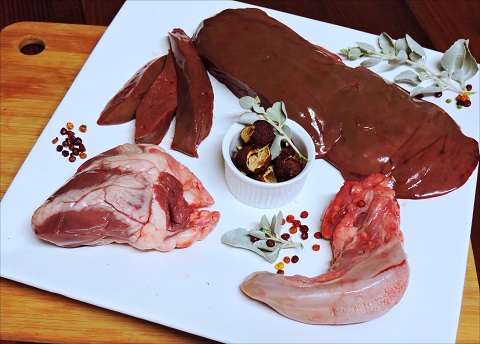
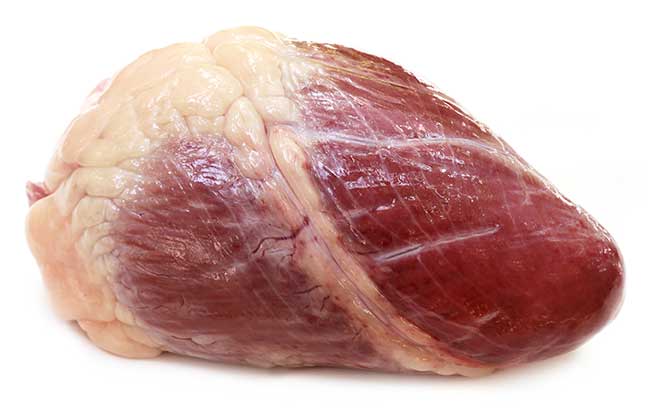
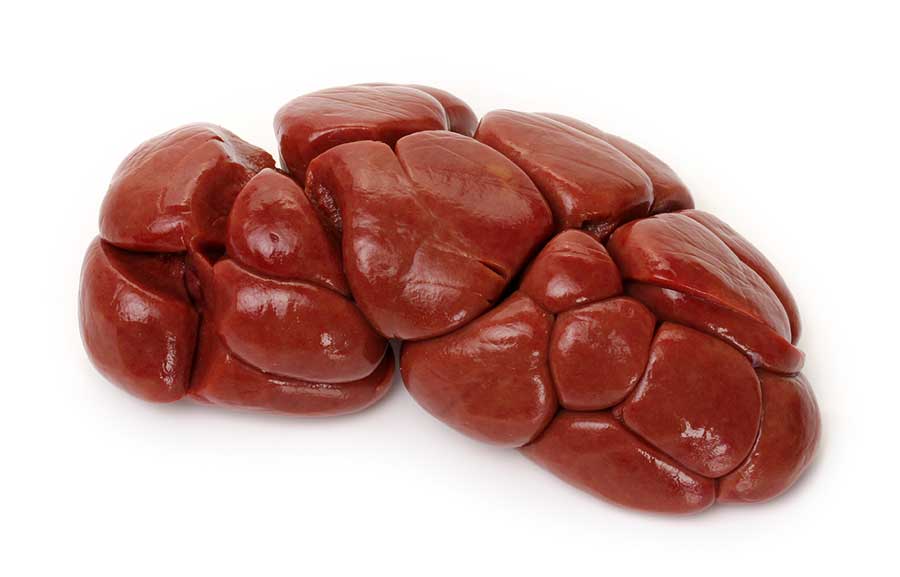
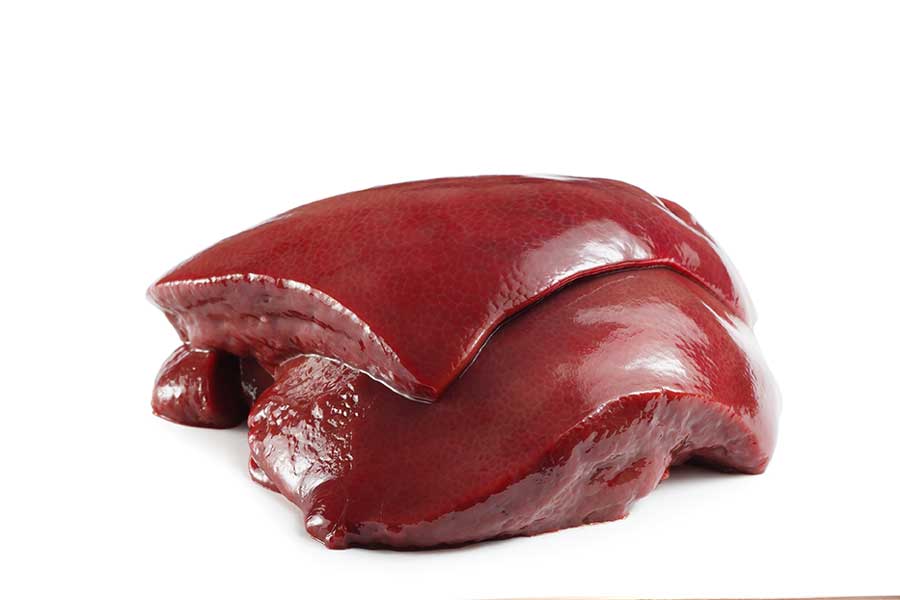

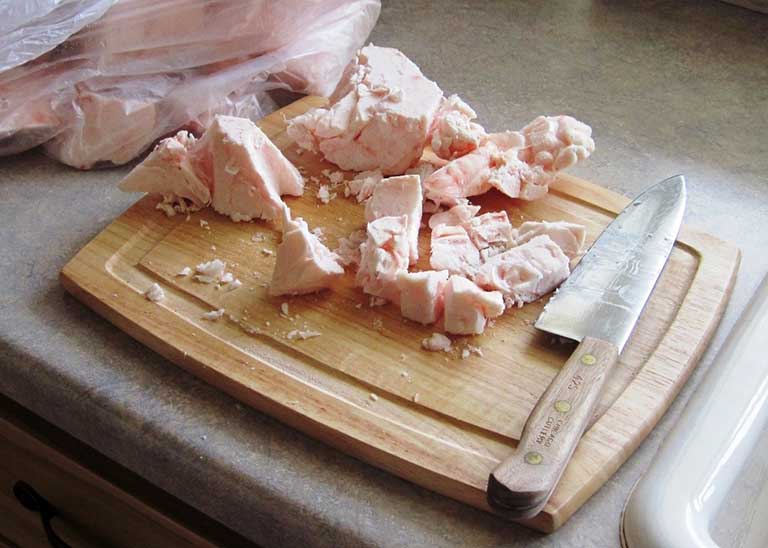
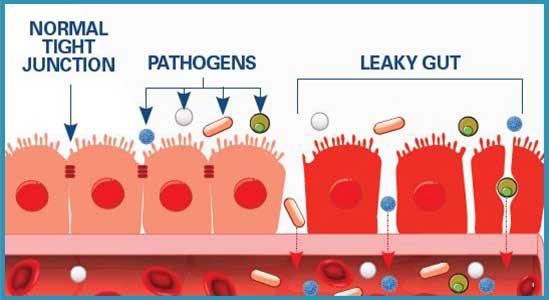
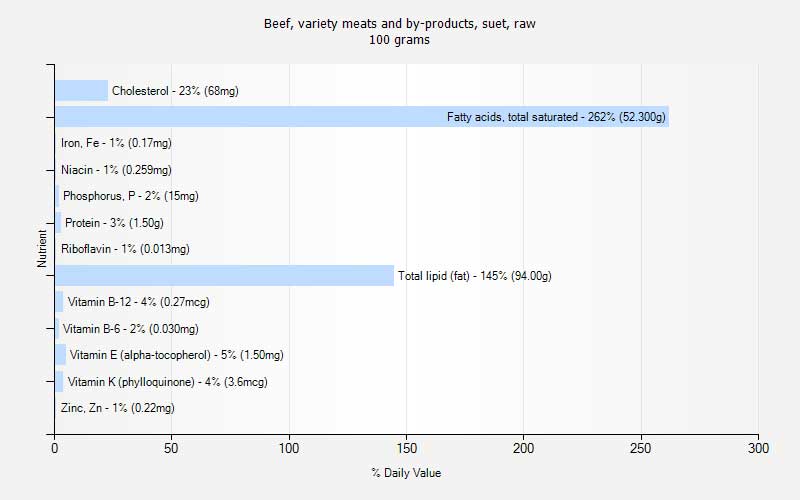

Aloha Dr. Cassar, I am excited to try this restorative meal and was wondering about your thoughts on parasites that may come from the meat. I buy og grass fed local meat without nitrates added, as well as staring to meet local farmers that have quality standards to supply my meat. What are your thoughts about parasites now that may come from meat? Just a way of life and something to clean out or are animals that are loved and cared for not major carriers? Are there ways to remove potential parasites before consuming? Thank you in advance,
Best,
Sarah
Author
Hi Sarah.
As far as parasites go, parasites will definitely be higher in concentration in animals that are sick versus animals that are healthy. If you have a normal amount of HCL (also called Hydrochloric Acid) in the stomach, these acids usually will destroy any parasites in the meat. that’s why I always tell people – do not dilute your stomach acid with water or liquids while consuming dense protein and fat. Try to drink your liquids before your meal.
I would also take a look at our “Parasites” category. There are several video courses on supporting removing parasites, both internally and externally.
In the near future I will be putting together a video course on the anti-parasitic medications I am currently using.
Hope that helps 🙂
Best,
Dr. Robert…